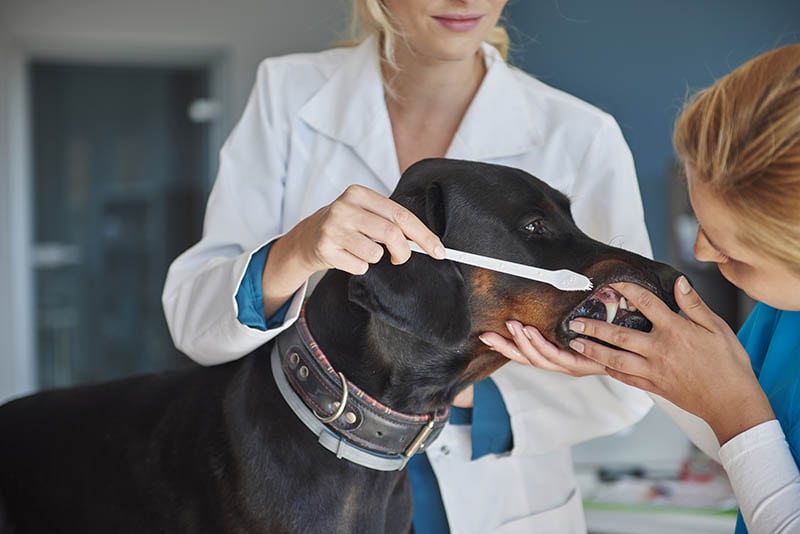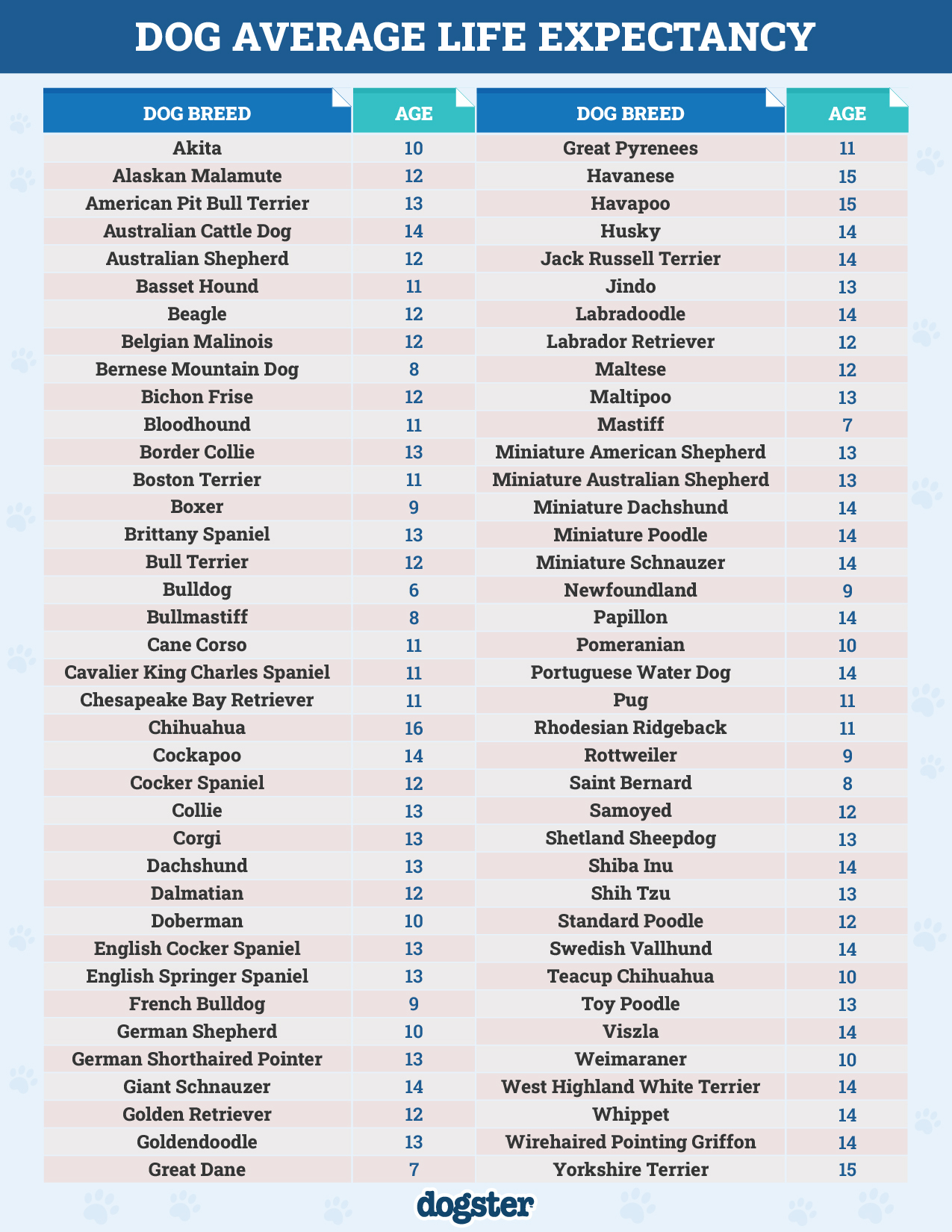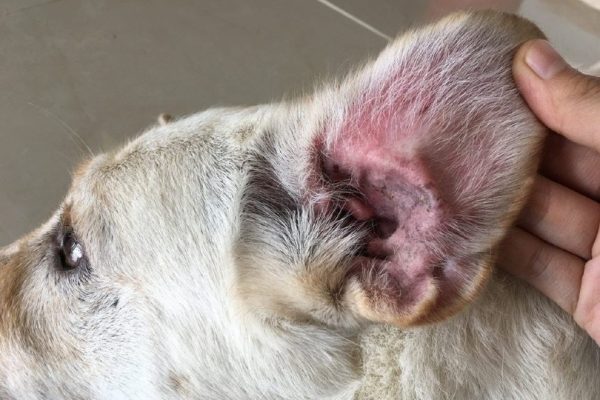In this article
View 2 More +A Doberman’s compact, muscular appearance can be intimidating. But any Doberman owner will tell you that beneath that tough exterior is a playful, affectionate watchdog eager to please. Like all dogs, several factors affect a Doberman’s lifespan. In this article, you’ll learn how nutrition, sex, genetics, and other factors impact how long a Doberman can live. The average lifespan for a purebred Doberman is 10 to 12 years.

What’s the Average Lifespan of a Doberman?
Dobermans have an average lifespan of 10 to 12 years, and you can do many things to help your Doberman live a long and healthy life.1 Below, we’ll take a closer look at why some Dobermans live longer than others.


Why Do Some Dobermans Live Longer Than Others?
1. Nutrition
Feeding your Doberman an unhealthy diet can lead to reduced immunity, pancreatitis, or diabetes, among other things. These conditions affect their quality of life and overall lifespan. High-quality dog food is essential throughout your Doberman’s life, as the risk of diabetes increases for older adult and senior dogs.
2. Environment
Unsupervised Dobermans who roam freely are at risk for accidents and injuries. Attacks by other dogs, getting hit by a car, encounters with wild animals, and physical abuse from humans can shorten an otherwise healthy Doberman’s life.

3. Living Conditions
Dobermans who live in cramped quarters with other dogs are at an increased risk of canine infectious diseases. Distemper, dog influenza, kennel cough, and parvovirus can spread quickly in unvaccinated dogs. Some of these illnesses can be expensive to treat and life-threatening.
4. Exposure to Extreme Temperatures
A normal body temperature for a Doberman is between 100.5° and 102.5° Fahrenheit. Exposure to the cold can lead to hypothermia, while a hot environment can bring on hyperthermia. Both conditions, when left untreated, can be fatal. Due to their short coats, Dobermans may develop hypothermia faster than other breeds.
5. Size
A healthy weight for purebred adult Dobermans is between 60 and 100 pounds. Males tend to be taller and heavier than females. On average, Dobermans who maintain a healthy weight will outlive their obese counterparts by 2.5 years.

6. Sex
In addition to age and obesity, sex plays a role in developing diabetes. Female Dobermans are twice as likely to develop diabetes than males. Diabetes can be treated but not cured. The condition is associated with a shorter lifespan in dogs, and the mean survival time after a diagnosis of canine diabetes is 1.5 to 2 years.
7. Genes
Dobermans are generally a healthy breed. However, they are at an increased risk for a blood disorder, Von Willebrand’s Disease (vWD). Dobermans with vWD are deficient in a protein that aids in blood clotting. The risk of prolonged bleeding tends to increase with age, but you can ask your vet about testing for vWD.
8. Breeding History
Each pregnancy puts a female Doberman at risk for pre-eclampsia when the dog’s calcium levels drop too low. Treating pre-eclampsia is risky since giving too much calcium can make a pregnant Doberman even sicker. In addition, male and female Dobermans bred without appropriate genetic testing can pass on vWD, which can shorten their offspring’s lifespans.
9. Healthcare
Routine canine wellness exams can catch diseases and illnesses early on. Doberman puppies should see a vet when they’re 6 to 8 weeks old. Puppies must be seen every 4 weeks for the next several months; your vet will provide you with a schedule for puppy exams. Healthy adult Dobermans should see the vet at least once a year. Once your Doberman enters their senior years, your vet may recommend that you schedule exams every 6 months.

10.Spaying and Neutering
Intact female Dobermans have an increased risk of mammary cancer. Dogs spayed before their first heat cycle have only a 0.5% risk of developing mammary cancer during their life. For Dobermans that aren’t spayed until after their second heat, that risk jumps to 26%.
Remember to have regular vet visits when owning a Doberman to keep their health and well-being. If you’re concerned about your dog’s health we suggest you speak to a vet.
If you need to speak with a vet but can't get to one, head over to PangoVet. It's our online service where you can talk to a vet online and get the advice you need for your dog — all at an affordable price!

The 4 Life Stages of a Doberman
1. Puppy

A Doberman’s puppyhood lasts for the first 12 months of their life. Good nutrition and immunizations set your puppy up for a healthy adulthood.
2. Young Adult
Young adulthood for Dobermans isn’t strictly defined. Many Dobermans will continue to gain muscle mass between their 1st and 2nd birthdays. Rambunctious, unsupervised Dobermans can be at risk for accidental injuries.
3. Mature Adult

As your Doberman ages, they may become less active. A more sedentary lifestyle can put your dog at risk for obesity. Your vet may recommend a special diet or more frequent exams as your Doberman grows older.
4. Senior
A Doberman is considered a senior during the last 25% of their lifespan, around 7 to 9 years. Older Dobermans may need to see the vet every 6 months for wellness exams. When your pup becomes a senior, you can talk to your vet about switching to a senior dog formula.

How To Tell Your Doberman’s Age
You may not know how old your Doberman is if you adopted them as an adult. Luckily, there are ways to determine your Doberman’s age. First, take a look at your Doberman’s face. A mature adult Doberman may have gray or white fur around their muzzle.
Next, you can examine your Doberman’s eyes. Some Dobermans’ eyes will become cloudy around 6 to 8 years of age. This color change is a harmless and painless condition called lenticular sclerosis, which should not be confused with canine cataracts.
Your vet can examine your Doberman’s teeth to estimate their age, but this isn’t as accurate as many think. Vets look for missing teeth, staining, and tartar build-up as signs of older adulthood. However, some younger Dobermans can have poor dental health as well.
Lastly, sit back and observe your Doberman. Older dogs are less active and more prone to weight gain than younger pups.


Final Thoughts
The average lifespan for a purebred Doberman is 10 to 12 years. Supervising your Doberman at all times can prevent accidental injuries, but the breed has an increased risk for a genetic blood clotting disorder, von Willebrand’s disease. You can help your Doberman stay healthy with regular vet visits, immunizations, and an appropriate diet.
Featured Image Credit: Mary Swift, Shutterstock



















